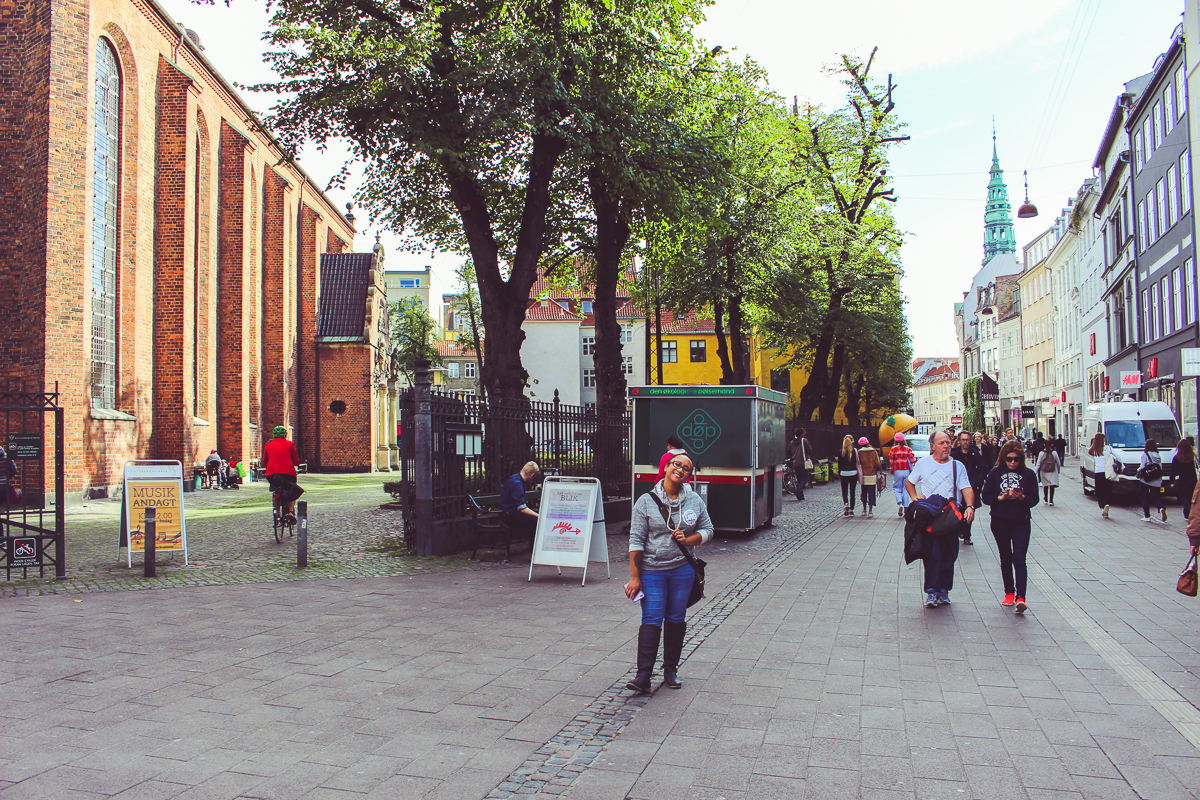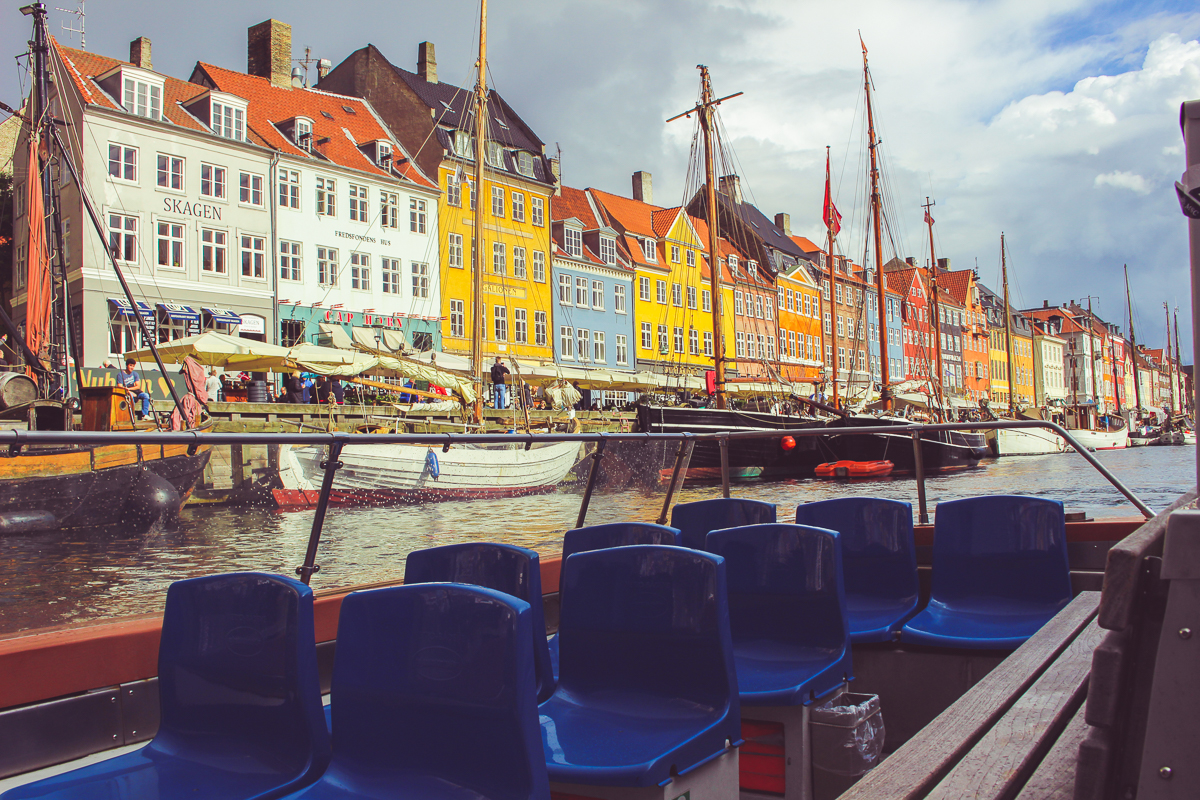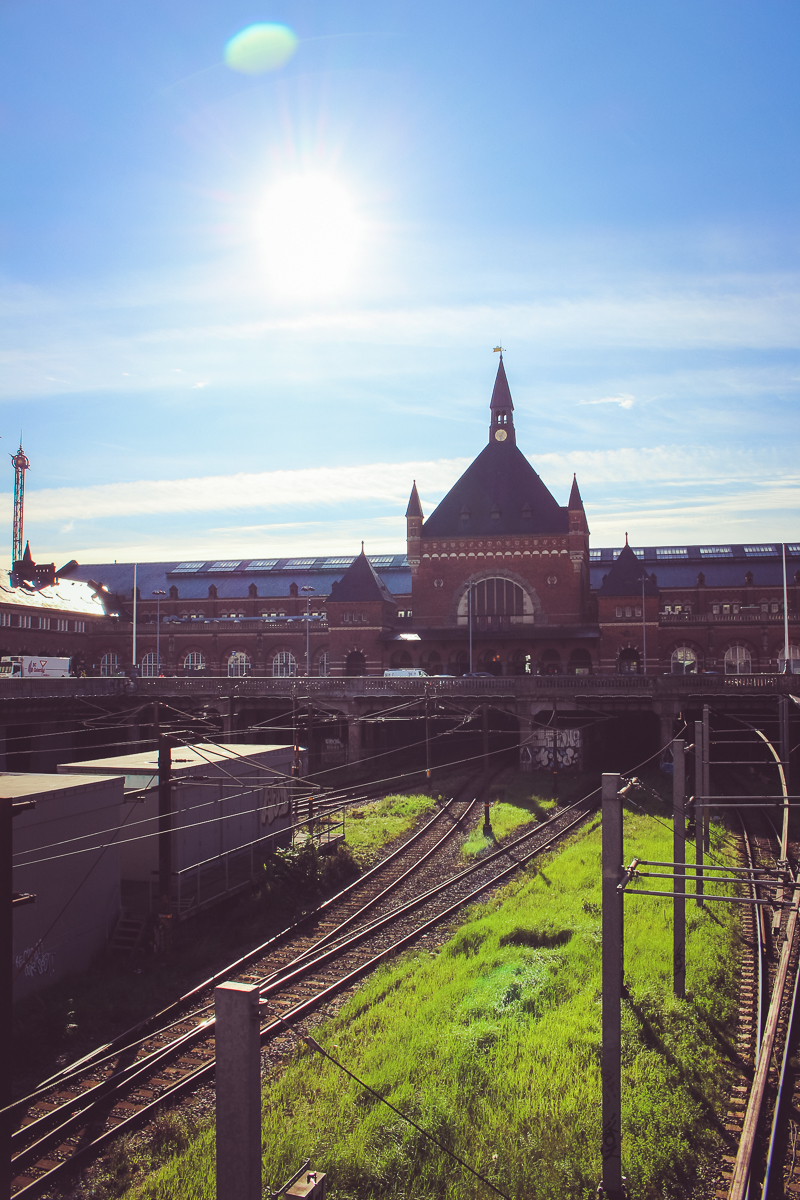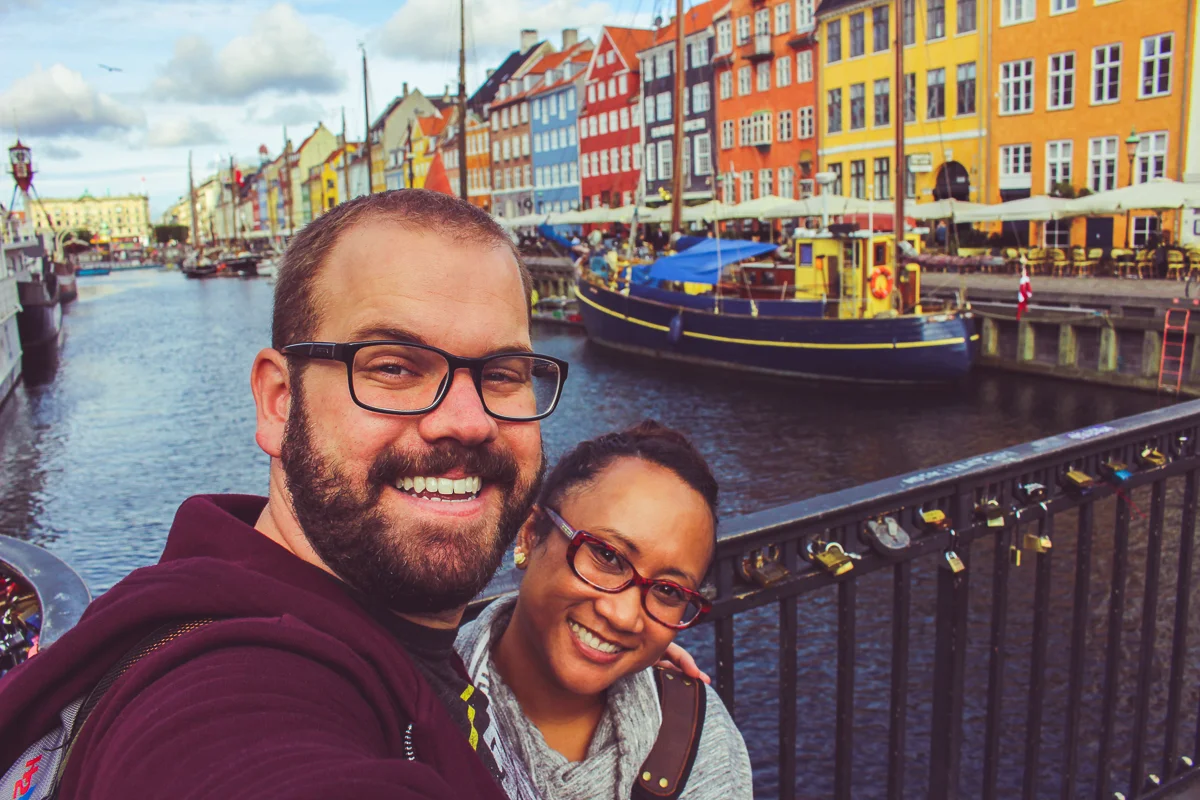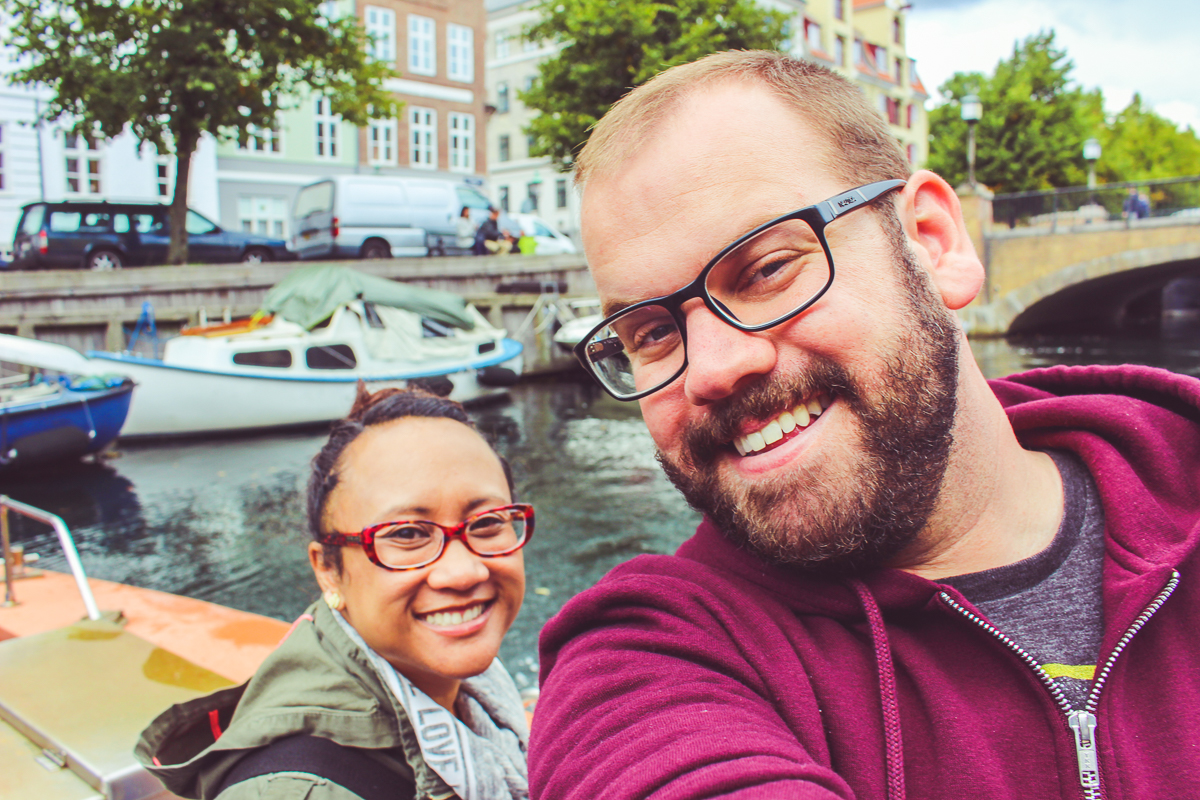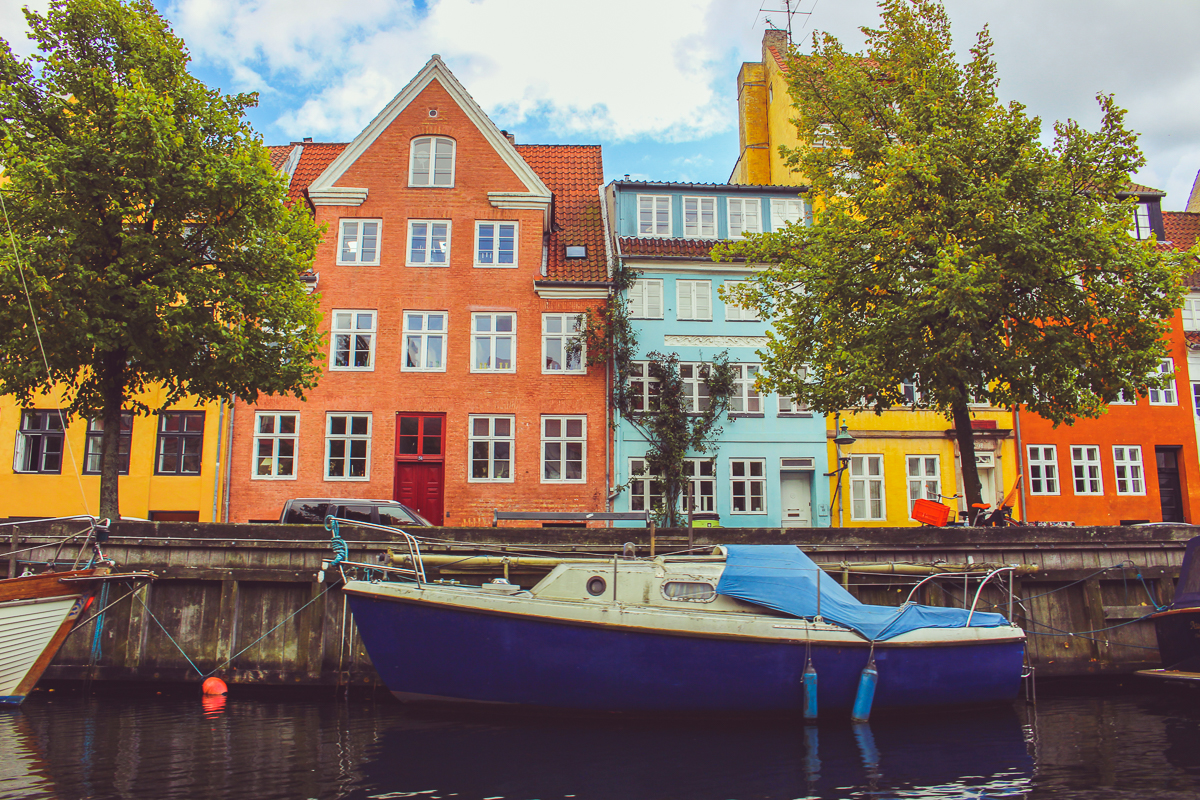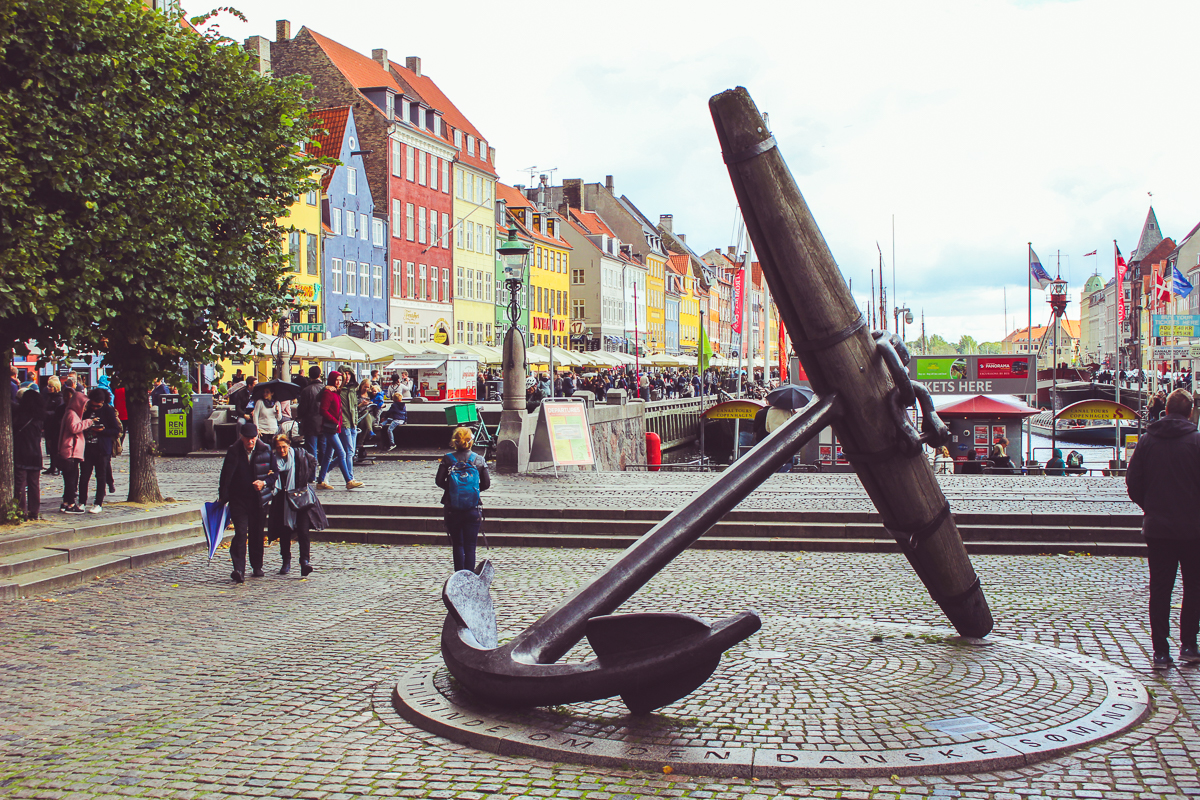Around May, my wife Cindy and I began to lament that we weren’t taking a major trip this year. With future travels and other savings goals in the way, we simply couldn’t muster a large expedition—or so we thought.
Cindy began to casually browse airfare and started making suggestions. Overcautious, I would find a reason why we couldn’t do what she was proposing. And then, Cindy would counter with a better, even cheaper reason why we could or should! One thing led to another and before you know it, we were waking up from a $400 trans-Atlantic red-eye nap. We cautiously rolled up our window shade and let our eyes adjust—a bright and beautiful view of Denmark appeared below.
Soon, we landed at the Copenhagen Airport, a small, classy arrival hub. We gathered our luggage, withdrew some Kroner (Danish currency), and then bought train tickets into town. Not 20 minutes later, we were dropping luggage off at our hotel and preparing to explore Copenhagen on foot. After a short stroll, we reached the entrance of Strøget, a main pedestrian thoroughfare through the city center.
As a kilometer long car-free street, Strøget is one of the most efficient ways to get through the city center. But I felt like it was billed as a quirky shopping destination and found that it felt just like any other outdoor mall, with all of the same name-brand shops that you would find anywhere else. Uninterested, we blew through this area in order to reach our real first destination of the day: Nyhavn.
If you perform a Google image-search of the name “Copenhagen”, Nyhavn will occupy over half of the results. It’s the very image and idea that drew us to the city. At face value, it doesn’t appear to be much more than colorful building facades on the waterfront but there is something magical about this place.
Nyhavn means “New Harbor”, or at least it was when it was built in the mid-to-late 1600’s. As the centuries rolled past, the area transitioned from the ‘fish, beer, and prostitution’ of early days to the touristy restaurants and museums of today. The colorful buildings benefit from being a historical home of Hans Christen Anderson and as the primary port for the various boat tours of Copenhagen.
That’s really all there is to Nyhavn and yet, I still found myself in love with the space. Like bugs to light, I don’t know what attracts people to pretty colors and gentle water but I suspect that it’s something deep inside of ourselves. Either way, Nyhavn is definitely worth a visit.
It was now time for lunch. Once we felt like we had sufficiently soaked up the area around Nyhavn, we proceeded across a pedestrian bridge to the other side of the port. The red eye traveling was starting to catch up to us and every step was beginning to hurt. We paused on the other side to take off our shoes and air out feet that have been constrained since California, nearly a day ago. TMI, perhaps?
Either way, once taking our rest, we laced up and continued to Papirøen, or “paper island”. The island appears in its former, industrial shell but now home to more artistic endeavors, including a hall called Copenhagen Street Food. The hall is a building packed with shipping pallets and street trucks catering food from all across the world. The area is remarkably trendy and began to fill up quickly.
We grabbed a brick pizza and a beer and stocked our stomachs with our first meal since the airplane.
After Copenhagen Street Food, we meandered next door and saw the facade of a contemporary art museum. While we weren’t prepared to enter, we were captivated by a sign out front, revealing a Japanese cultural nod by Yoko Ono but pleading to not leave bikes loitering about. Basically, the premise of the exhibit was to write your dearest wishes onto a card and tie it to the trees provided.
Cindy and I were sure to leave some wishes from America.
After leaving our wishes (I wont tell you mine, but the word “impeach” was used), we crossed back to Nyhavn. It was really neat to see the port’s retracting bridge in use!
Once on the other side, in a rare move for me, I opened up my wallet and booked a boat tour of the Copenhagen waterways (although, in my defense, I clearly booked the cheapest of the cruise companies). We grabbed a seat in the open-air rear of the boat and within 20 minutes, we had departed from the Nyhavn canal. We weren’t yet half-way out when we began to feel our first rain drops of the trip.
With the rain, most passengers retreated to the covered-midsection of the vessel but we didn’t find it too bothersome. We opened up an umbrella to share and prepared to hunker down but the sky soon cleared. With better skies, the other passengers returned to the back, including a quartet of Brits who looked like they belonged on the English-version of The Jersey Shore. Rain or shine, the boat’s live tour guide continued her narration in Danish, English, and German—a proficient trilingualism that is pretty common in Europe but seemed like black magic to an American such as myself.
We passed old military barracks, the opera house, a palace, and the Amager Bakke, a waste-incinerating power plan that doubles as an artificial ski slope. I first learned about it in the Netflix series Abstract: The Art of Design on the episode about architect Bjarke Ingels and was shocked and delighted to see that it so prominently occupies the city's skyline.
One destination we were able to see from the boat was the statue of The Little Mermaid. Built in 1913 and just 4 feet tall, the small statue of the city’s iconic fairytale is perched on a rock in the harbor. However, it was over a mile away from the area we were exploring on foot and seeing crowds huddled around the unimposing bronze girl immediately talked us out of the trek—we got our fix from the boat.
The boat continued on, this time cutting inward to some canals in newer sections of town. We saw more stacked, colorful buildings, boat houses, and the famous Church of Our Savior, an 18th century church with a fascinating spiraled bell tower.
As we proceeded through these inner canals, we also threaded under a few bridges, with clearances that got tighter and tighter. Our flustered tour guide would have to bark instructions to duck or sit down, trying dearly to warn passengers of the impending head-chopper clearances.
Soon, after exploring around the Christiansborg Palace, it was time to return up the channel and back to Nyhavn. A gift for weathering the occasional rain, a rainbow emerged over our destination.
Up until this point, we found the weather to be rather fair and the occasional sprinkles were nothing to grouse about. But upon making land in Nyhavn, we were greeted by an ominous sky—it was time to trek back through Strøget to our hotel before the sky opened up. Unfortunately, we were too late!
With hardly any transitional sprinkles, it began to pour. Strøget emptied out and we sought cover in a few gift shops, pretending to browse so as to avoid any suspicion of our motive to stay dry.
But within five minutes, the rain had stopped. We reemerged onto Strøget to the sight of the crowds resuming their day. Seeing everyone disappear and then reappear felt like coordination only capable in a Truman Show-styled production but I suppose its just an example of how commonplace random rain is in Denmark.
We soon made it back to our hotel and kicked off our shoes. Though still early in the afternoon, our red-eye travels were finally catching up to us. We were exhausted but committed to planning out the next few days. With more rain in the forecast for the very next day, we decided to move a visit to Tivoli Gardens from the next morning to that very evening.
Glad to kill time, we settled in for a nap. When we would awake, it would be time for dinner and then a trip to Tivoli.
As I’ve said in other posts, I haven’t found it necessary to make blog posts about theme parks and amusement parks. But Tivoli is different.
Tivoli Gardens opened in 1843, allegedly chartered by King Christian VII to keep his population amused (and thus distracted by monarchical politics). This would make Tivoli the second-oldest amusement park in the world after Bakken, a fairground-styled park 7 miles to the north, which opened a hundred years earlier. In addition to its age, Tivoli is arguably one of the earliest examples of theming and rides, with various buildings modeled after “the Orient” and mechanical rides that adorned its grounds from the earliest days. In addition to the rides, Tivoli has been, and continues to be, home to restaurants, bandstands, theaters, ornate gardens, and a night-time fireworks show.
For all of these reasons and more, for me, Tivoli Gardens transcends your average theme park. It is a Danish cultural icon and a living historical artifact. And considering my love of these parks (and my professional career working in one), visiting Tivoli was practically a pilgrimage. And so, we planned our trip around the park’s operating calendar and stayed near the park, which is easy to do as it occupies one square-block in the city’s center, across from the central train station.
Still a Danish public commodity, admission to Tivoli remains an affordable 120 Kroner, or just under $20. This gets a visitor access to gardens, music, shows, and restaurants. Rides cost more. Trying to show restraint and save money, Cindy and I chose to forgo the “Unlimited Ride” ticket (just over $35; still a value, admittedly) and strategically use individual ride tickets to do just one or two things that caught our fancy.
This strategy brought us to the Rutschebanen, or The Roller Coaster.
Built in 1914 and themed to look like a mountain (sound familiar to anyone?), The Roller Coaster is an old scenic railway-styled roller coaster in which a brakeman actually rides the vehicle with guests and controls the speed of the trains by pulling back on a brake lever. Seeing the operator push the coaster-train to a running start and then hop onto the moving vehicle both filled me with a rose-colored nostalgia for the past and gave me a heart attack from my awareness of present regulations. It was amazing.
The Roller Coaster experience itself is still thrilling and was glass-smooth. I was amazed at how well the attraction had been maintained and can understand why it is still Tivoli’s most popular ride.
We also rode an interactive-shooting dark ride that lives in the base of the Roller Coaster mountain (and yes, I totally won the game!) but soon, we realize the tickets were adding up and chose to not go on any other rides. Most of the rides were old fashioned or hyper-intense modern flat rides, which don’t catch my fancy anyway. The only ride I’m kicking myself for not experiencing was Dæmonen (The Demon), a floorless coaster with one of those gimmicky VR-overlay experiences.
Still, at the time I thought it showed admirable restraint and it does give me something to go back for.
We toured the grounds, taking in the sights. The caricatured, themed settings of India, China, and Arabia seemed less other-worldly than other-timely. And yet, they were executed with great beauty and maintained with a care that was inspiring.
Soon, it was time to go. The park was nearly empty and yet would still operate for another hour, another sign (to me) that the place was still fulfilling a service to the citizens of Copenhagen. We strolled through the central train station and were back at our hotel in minutes. We still had another day to explore this world-class city.
That should do it for Day 1 of our trip to Copenhagen. I hope to have Day 2 out shortly, so stay tuned!
For more photos of this first day in Copenhagen, check out the gallery below!:





